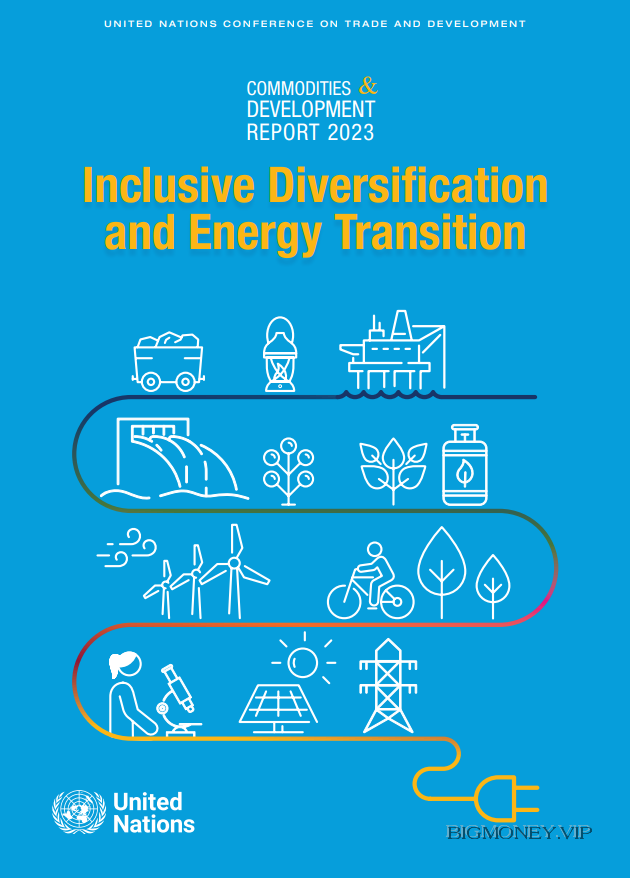Inclusive Diversification and Energy Transition

1
The predicament
of commodity-dependent
developing countries
Commodity-dependent developing countries (CDDCs), defined as countries that derive at least 60 per cent
of their total merchandise export revenues from commodity exports, have long over-relied on the extraction
and export of natural resources to support their economies. While this concentration on the commodity
sector has brought revenues to these countries, it has also created numerous challenges and vulnerabilities.
These include macroeconomic instability, delayed industrialization or deindustrialization, the long-term
declining trend of prices of exported primary commodities relative to the prices of imported manufactured
goods,
and volatility of export revenue caused by commodity price fluctuations.
Many CDDCs are among
the most vulnerable to the impacts of climate change, such as extreme weather events, rising sea levels, and
droughts.
The COVID-19 pandemic and the war in Ukraine have further exposed CDDCs’ vulnerabilities
and
highlighted the urgent need for these countries to diversify their economies.
Diversification has eluded the majority of these countries for decades. In fact, most CDDCs
seem to be trapped in a state of commodity dependence.
To make matters worse, CDDCs
now have to diversify in ways never done before: through low carbon paths in the context of
climate change mitigation and the energy transition.
This is challenging because diversification
has been associated with the increasing use of fossil fuels and rising greenhouse gas (GHG)
emissions.7
Figure 1.1 illustrates this point by showing the relationship between average
diversification and total GHG emissions in the past two decades. Hence, efforts to reduce
global GHG emissions will undoubtedly impact CDDCs’ policy space to diversify their
economies and achieve the Sustainable Development Goals (SDGs). And diversifying in the
context of the energy transition should be done in a way that is just and equitable rather than
worsening income inequality.
If the current and emerging global context will not permit CDDCs to follow the same
development model that has allowed other economies to prosper, will they be able to chart
their own pathways? What will such pathways look like? And what will be the meaning of
economic transformation and diversification for these economies?
Economic and export diversification is the key to reducing commodity dependence and
increasing the economic resilience of this group of countries. Diversification not only minimizes
the risks associated with economic concentration but also generates faster economic growth8
by expanding productive capacities and shifting resources from low to high-productivity
sectors, and promoting economic structural transformation. Successful cases of diversification
often combine various pathways, for example, by adding value to primary commodities such
as producing and exporting chocolate instead of cocoa or producing a larger number of
products within or outside the commodity sector. A country may also diversify by investing
its financial resources into a broad set of assets to minimize risk, as is the case with Norway
To successfully diversify, CDDCs will have to deal with old and new issues that have been
hampering their socioeconomic development. These include the structural barriers that have
prevented them from fully realizing their potential, such as political instability, limited institutional
capacity and governance, poor infrastructure, and insufficient investment in education and
skills training. CDDCs will also need to embrace new technologies and business models to
create more resilient and sustainable economies.
While the challenges seem daunting, this might be the time, more than before, when CDDCs
should focus on overcoming commodity dependence. While decarbonization and the energy
transition might represent challenges, they also come with opportunities for countries that are
able to harness them.
In the current paradigm, which calls for decarbonization of production and consumption,
the demand for traditional high-carbon commodity exports from CDDCs, such as fossil




